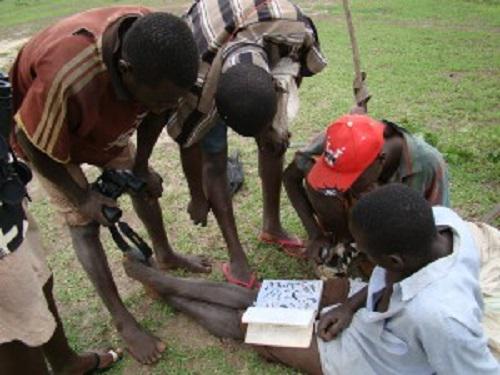Martin Odino
Other projects
24 Jan 2014
Modelling Community-Based Sustainable Bird Monitoring and Avitourism as a Conservation Tool against Bird Poaching at Bunyala Rice Scheme, Western Kenya
6 Jul 2015
Community-Based Commercial Fowl Farming For Inexpensive, Nutritious Alternatives to Poisoned Birds and Enhanced Anti-Poisoning Activities in Bunyala, Kenya
2 Jan 2018
Identifying the Drivers of Intentional Wild Bird Poisoning and Providing Sustainable Alternatives to Wild Bird Poaching and Consumption
This project will quantify the threat of Furadan, a toxic pesticide, to birds and use this scientific data to alert conservation and regulatory authorities about the magnitude of the problem, while educating locals on Furadan’s toxicity and suggest sustainable alternatives to wild bird meat.
/57ba6fb23ded68d7bda3ed1a7c9f87bc.jpg)
Watching from a distance (taken by local assistant).
This study will take place in Bunyala rice scheme in western Kenya where there is large scale intentional poisoning of birds using Furadan. Bunyala rice scheme is in remote Western Kenya and attracts numerous birds including endemics and migrants.

Educating bird poisoning poachers.
We will survey the poisoning grounds that are mostly about the rice scheme. This survey team will be constituted of locals who I will train as our assistants. These should continue being scouts when the project is completed. We will walk at least five transects and note the bird species and their numbers (quick, near accurate estimate for small congregatory seedeaters) just prior to setting up of Furadan-laced poison baits by the hunters. Furadan kills most birds within minutes. We will therefore proceed on to count/estimate numbers of observed dead bird species along the designated transects and compare this to numbers of/and species that were earlier on noted. Questionnaires and interviews will also be administered to hunters and consumers to assess their attitude as well as the history and trends of the poisoning scenario and also to determine if there are any sick feelings or illnesses that the locals may experience from eating poisoned wild birds. In addition, some samples of the dead birds will be collected for necropsy in the lab to confirm Furadan-caused mortality.
Informal education including poster education will then be used to explain Furadan’s toxicity to locals.
Based on the scientific findings of this project, the outcome should be an important indicator of the significance of the threat that Furadan poses to birds and will therefore be important in inferring the necessary regulatory control for the toxic pesticide.